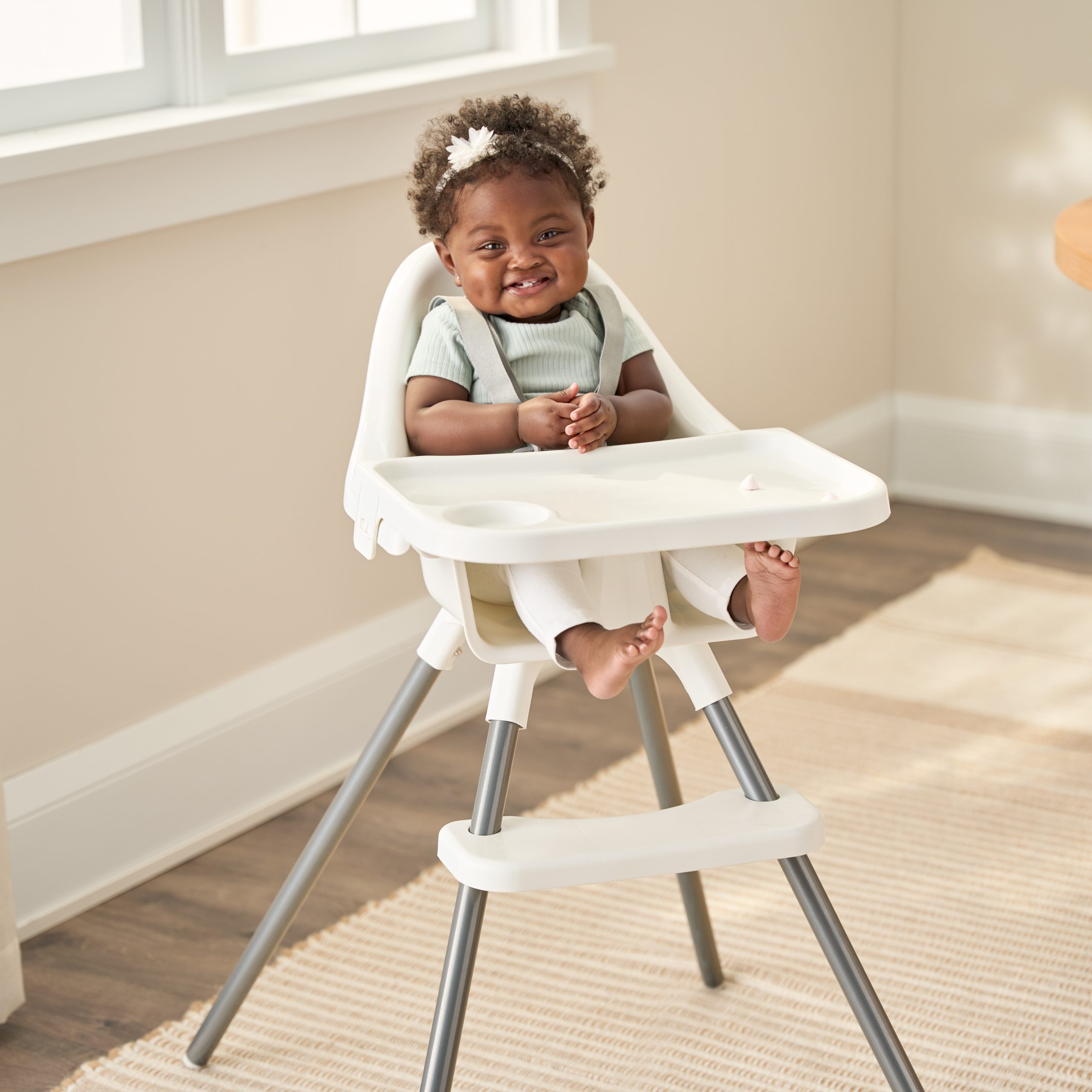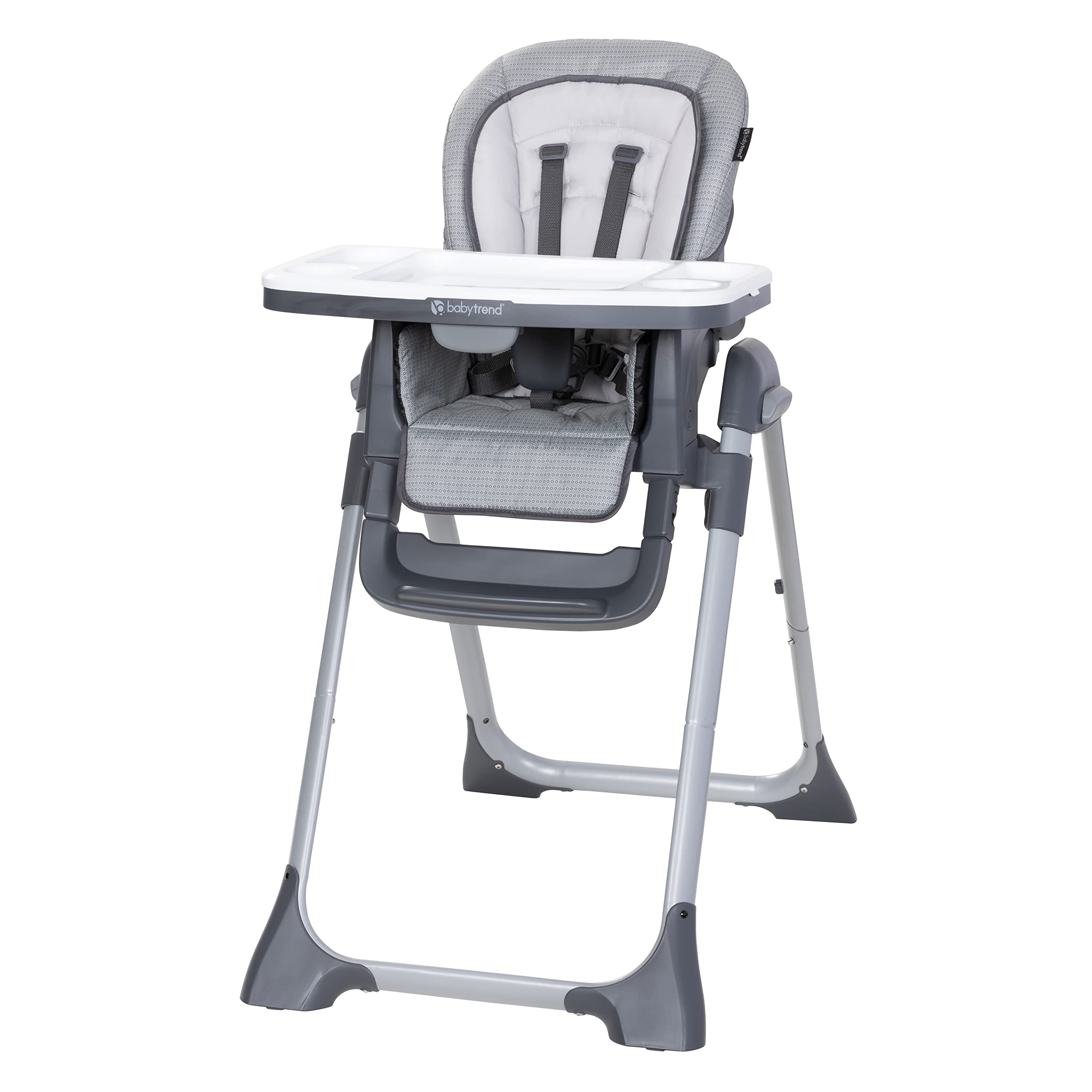High chairs are essential for feeding infants and toddlers, providing a safe and secure place for them to eat. However, understanding how long a baby can sit comfortably in a high chair is crucial for their health and well-being. This article outlines the important factors to consider, guidelines for comfortable seating durations, and tips for maximizing comfort during mealtime.
Understanding Baby Comfort in High Chairs
The Importance of Comfort During Mealtime
Comfort plays a vital role in a baby’s eating experience. When babies are comfortable, they are more likely to engage with their food, try new textures and flavors, and enjoy the surroundings. An uncomfortable baby may squirm, cry, or refuse to eat altogether, making mealtimes stressful for both the child and the caregiver.
Choosing the right high chair is paramount. It should provide adequate back support, a comfortable seat, and adjustable features to accommodate your growing child. Additionally, considering the materials used in the high chair can influence comfort; cushioned seats and breathable fabrics can enhance the overall experience.

Recognizing Signs of Discomfort
Parents and caregivers should be attuned to their child’s body language during mealtime to gauge comfort levels. Signs of discomfort can include excessive fidgeting, arching of the back, or attempts to escape from the high chair. If a child exhibits these behaviors, it may indicate that they need a break or a change in position.
Taking note of these signals can help caregivers understand when to give the child a rest. It’s essential to remember that every baby is different, and their tolerance for sitting in a high chair can vary. Regular breaks during mealtime can make the experience more enjoyable for everyone involved.
Recommended Duration for Sitting in a High Chair
General Guidelines for High Chair Use
The American Academy of Pediatrics (AAP) provides general guidelines on how long a baby can comfortably sit in a high chair. For infants aged six months to one year, the recommended duration is about 20 to 30 minutes per meal. This timeframe allows enough time for feeding without causing discomfort or fatigue.
For toddlers aged one to three years, sitting times can increase to around 30 to 45 minutes. As children grow, they develop better muscle control and can sit for longer periods. However, it’s still essential to monitor their comfort levels periodically during meals.
Adjusting Time Based on Age and Development
As children grow, their ability to sit comfortably in a high chair can change. Factors such as age, size, and developmental milestones significantly impact how long a child can stay seated. For example, younger infants may require more frequent breaks, while older toddlers might be able to engage in longer meals.
It’s crucial to adapt seating times based on individual needs rather than strictly adhering to guidelines. Observing how your child reacts during mealtime will help you identify their comfort threshold. If they seem restless or agitated, it’s best to take a break and allow them to stretch and move around.
Creating a Comfortable High Chair Environment
Optimal High Chair Setup
Creating a comfortable environment for your baby in a high chair begins with proper setup. Ensure that the high chair is at the right height relative to the dining table to allow your child to reach their food comfortably. Additionally, the seat should be adjustable to fit your child’s size as they grow.
Using proper restraints is another critical aspect of safety and comfort. Harnesses should be snug but not overly tight, ensuring that the baby feels secure without being restricted. This balance helps prevent fidgeting and enhances comfort during mealtime.
Enhancing Comfort with Accessories
There are various accessories available that can improve comfort in high chairs. For instance, padded seat covers or cushions can provide additional support, especially for younger infants who may need extra cushioning. Some high chairs also have removable trays, allowing for easier access to food and reducing strain on the baby’s arms.
Additionally, using bibs that cover the lap and legs can help keep the baby clean and dry, preventing discomfort associated with spills. Parents can experiment with different accessories to find the optimal combination for their child’s comfort and safety.

Breaks and Movement: The Key to Comfort
Importance of Regular Breaks
Sitting in a high chair for extended periods can lead to discomfort and restlessness in babies. Therefore, incorporating regular breaks into mealtime is essential. Parents should aim to give their child a short break every 15 to 20 minutes, allowing them to stand up, stretch, and move around.
These breaks not only help alleviate physical discomfort but also provide an opportunity for social interaction. Engaging with your child during these breaks can create a positive association with mealtime, making it less of a chore and more of a fun experience.
Encouraging Movement During Meals
Encouraging movement can be as simple as allowing your child to explore their food with their hands. Finger foods can promote tactile experiences and engage their senses while seated in the high chair. Allowing kids to play with their food can extend mealtime, providing both nourishment and entertainment.
Parents can also introduce toys or books that can be safely handled in the high chair. These distractions can keep a child engaged while providing necessary breaks from sitting still. Always supervise closely to ensure safety and prevent choking hazards.
Developing Healthy Eating Habits
Role of High Chairs in Eating Behavior
High chairs are more than just seating; they play a significant role in establishing healthy eating habits. Research suggests that consistent mealtime routines, including using a high chair, can foster positive eating behaviors. When children associate high chairs with mealtime, it sets the stage for structured eating patterns.
By creating a designated space for meals, parents can minimize distractions and encourage focused eating. This structure helps children learn to recognize hunger and fullness cues, promoting mindful eating habits from an early age.
Introducing Variety for Engagement
Introducing a variety of foods can also enhance the mealtime experience for babies. Offering different colors, textures, and flavors can keep meals interesting and engaging. A diverse diet not only supports nutritional needs but also encourages curious eating behaviors.
Parents should aim to present new foods regularly while respecting their child’s preferences. This approach promotes exploration and experimentation with food, helping children develop a healthy relationship with eating.
Safety Considerations with High Chairs
Ensuring Stability and Security
Safety is paramount when using a high chair. To ensure stability, parents should choose models that meet current safety standards and have a sturdy base. High chairs should not tip over easily, and any movement should be minimal to prevent accidents.
Always check for the presence of safety harnesses and ensure they are used correctly. Restraints should be used every time the child is in the high chair, regardless of how long they are expected to sit. This practice minimizes the risk of falling out or leaning too far.
Regular Maintenance Checks
Regular maintenance checks can also enhance safety. Inspect the high chair for wear and tear, loose screws, or damaged parts. Ensure that all components are functioning properly, and clean the chair frequently to maintain hygiene and prevent the buildup of food particles.
Parents should also be aware of recalls for high chair models. Keeping informed about product safety and updates is essential for protecting your child from potential hazards.

Conclusion: Finding the Right Balance
In conclusion, understanding how long a baby can sit comfortably in a high chair involves considering various factors, including age, development, and individual comfort needs. While general guidelines provide a useful framework, caregivers must remain attentive to their child’s specific signals of discomfort.
Creating a supportive and engaging high chair environment can significantly enhance mealtime experiences. By incorporating breaks, encouraging movement, and focusing on safety, parents can foster healthy eating habits and joyful interactions with food.
Ultimately, finding the right balance between comfort and structure will contribute to a positive mealtime atmosphere, benefiting both the child and the caregiver. As babies grow, adapting these practices will ensure continued comfort and enjoyment during this essential part of their daily routine.
